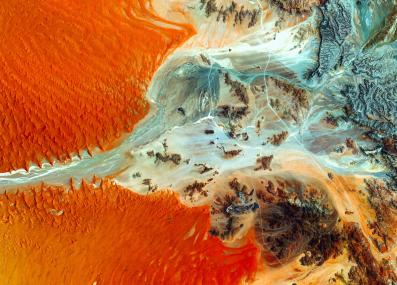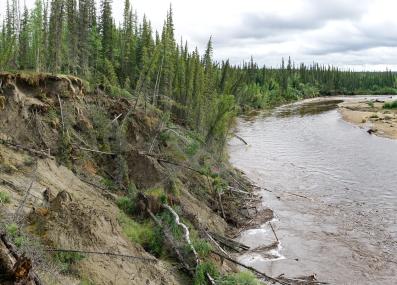Have a question?
Will climate feedback loops push us past a “point of no return”?
Tripping the Earth's climate feedback loops could bring us rapid warming that would be hugely damaging in the near term. But over the longer term, our planet can regulate even truly gigantic changes to the atmosphere.
October 4, 2022
The basic mechanics of climate change are familiar: Burning fossil fuels increases the amount of heat-trapping greenhouse gases in our atmosphere, causing the planet to retain more heat. However, the climate system is complex, and changing the planet’s temperature can also change the natural world in ways that release still more greenhouse gases. These are feedback loops, or ways that global warming can accelerate itself in a vicious cycle.
Is it possible these feedback loops could send us past a point of no return—a tipping point where humans no longer have the power to slow climate change? Not exactly, says Andrei Sokolov, MIT research scientist and an expert on climate sensitivity. Over longer time periods, he says, the Earth will balance itself out through corrective measures, such as the ocean absorbing carbon dioxide from the air. In the short term, though, the warming effects of feedback loops may make our planet a decidedly unpleasant place to live.
What are these climate feedback loops? One example is the loss of ice cover as higher temperatures melt glaciers and reduce the amount of ice that forms in the Arctic each winter. Ice reflects lots of sunlight back into space and helps to cool the planet (the “albedo effect”), but when ice turns to darker seawater, that effect is diminished. Another example is water vapor: higher global temperatures make more water evaporate from oceans, lakes, and rivers, which means more water vapor is in the atmosphere trapping heat. And climate change already is causing more major wildfires, which release the carbon stored in trees.
All these effects can reinforce and worsen Earth’s warming trend, Sokolov says. But none, on its own, is catastrophic. Ice exists mostly in polar locations that don’t get much sunshine, dampening that albedo effect. Fires release CO2 stored in forests, but forests regrow and turn back into carbon “sinks” that pull the greenhouse gas out of the air.
The most troubling feedback of all has to do with permafrost, soil that stays perpetually frozen. Enormous amounts of carbon reside in the permafrost of far northern places like Alaska and Siberia, in the form of both CO2 and methane (CH4), a shorter-lived but more powerful greenhouse gas. Researchers estimate there may be as much as 1,600 billion tons of carbon stored in this permafrost. The Arctic region is warming faster than the planet on average, and this effect could thaw the soil and release some or all that carbon into the atmosphere.
Such an event could significantly accelerate climate change. To instantly release the entire cache would double the amount of carbon now in the atmosphere, Sokolov says, causing a rise in global temperatures of 3.5 degrees Celsius. This would blow past the world’s shared goal of limiting climate change to 1.5 degrees Celsius.
While that frightening-sounding outcome is possible, Sokolov says most of the climate models he has studied show a much more gradual release of permafrost carbon. And, crucially, the same models show that the oceans would be able to absorb the carbon even if permafrost released 2,000 gigatons, more than the highest estimate of what exists.
“In short,” he says, “I don’t think there is a ‘point of no return.’ … In simulations with large CO2 pulses, the atmospheric CO2 concentration and temperature still come down, primarily due to carbon uptake by the ocean.”
Still, this isn’t a world we want to live in. If the oceans had to take in all the carbon released from Earth’s permafrost, that would intensify problems such as ocean acidification. Even if humanity were to completely stop emitting carbon after this big release, he says, it would take a thousand years for the atmospheric level of CO2 to come down to around 500 parts per million (today’s level is around 420 ppm). As Sokolov says, “you don’t want to go there.”
Thank you to Alton Thompson of Greendale, Wisconsin, for the question. You can submit your own question to Ask MIT Climate here.








